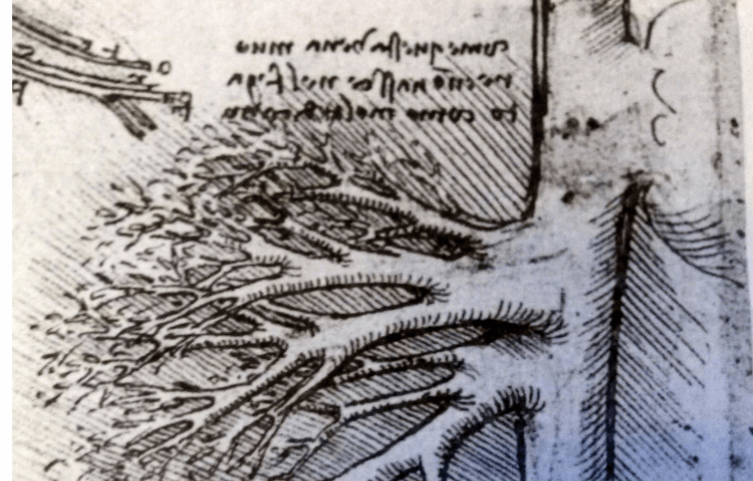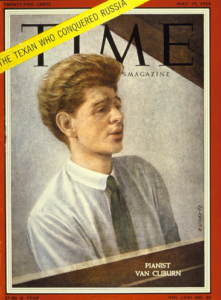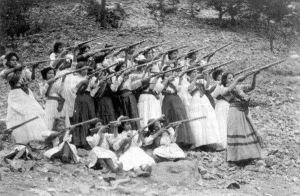In the year 1300, Pope Boniface VIII issued a papal decree, De Sepulturis, which outlawed various methods of lightening the bodies of the diseased for the ease of transport. These methods–common among the Crusaders in the Near East–included the removal of flesh by boiling as well as dismemberment, which also allowed for bodies to be stored in more compact containers. For years after, De Sepulturis was misinterpreted to include the condemnation of anatomical dissection, and for years the study of anatomy would suffer from this misconception. Over time, however, anatomical dissections regained popularity and became important not only to scientists of the body, but also to artists like Michelangelo and Leonardo Da Vinci. However, even into the 1500’s, anatomical sketches were considered distractions unworthy of publication in anatomy textbooks.1

Leonardo Da Vinci, the famous Italian polymath most commonly known today for his painting Mona Lisa, was not renowned for his anatomical diagrams in his time; but unlike his artist peers, his illustrations of the human structure went far beyond the superficial arteries and musculature. While his diagrams do not indicate formal training or even first-hand experience at dissection, Da Vinci began sketching the human anatomy at four different perspectives, simulating a three-dimensional model. Furthermore, Da Vinci sketched the bodily organs, and even wrote about their anatomical functions. It seems that it was Da Vinci’s unquenchable thirst for knowledge and inquiry that drove him to observe deeper than what most deemed necessary. This was characteristic of Leonardo from a young age. Indeed, in 1478, when Leonardo began his career in Florence under the Compagnia de San Luca, he was just sixteen. His early loves for mathematics and mechanics were maintained throughout his life and consistently influenced his vision of the world.4;

Vision was a key aspect to human knowledge to Da Vinci. Being a man of many talents and interests, Da Vinci was drawn to many occupations, and in 1478, after recommending himself to the Duke of Milan, he was made a royal appointee to the duke, Lodovico Sforza, as chief military engineer. In his letter of self-recommendation, Da Vinci referred to himself not only as an artist, but also as a mathematician, architect, and engineer. One of Da Vinci’s first tasks in Milan was to supervise the construction of the Cathedral at Pavia, which would become one of the largest cathedrals in the world. However, it is reported that Da Vinci became so immersed in the theoretical aspects of the physical laws and mechanics involved in the construction of the cathedral that his subordinate had to assume leadership on the practical matters of construction. During this time, Da Vinci also began a practice that has allowed historians and enthusiasts to obtain much deeper insight into the course of Da Vinci’s intellectual studies; like many intellectuals of the Renaissance, Da Vinci began cataloging and recording his studies in notebooks. Many of the anatomical sketches that still survive today were contained in such notebooks. Regardless of his official position as chief military engineer, however, Da Vinci’s primary modes of creation were artistic. Indeed, it was in Milan that Da Vinci finished the paintings Madonna of the Rocks, and The Last Supper; both are masterpieces of human expression and artistic style and technique.5
In 1500, Da Vinci left Milan and continued to paint. He spent several years as a vagabond and finished few paintings during these years, although the famous Mona Lisa was among those left unfinished around the year 1503. At the age of sixty-three, he was appointed to the company of the king of France, near Ambroise, where his chief duty was to keep good company to the king. Leonardo spent the last ten years of his life continuing his research in the realm of the physical sciences, and died on May 2, 1519.6
- Leonardo da Vinci, Leonardo Da Vinci on the Human Body: The Anatomical, Physiological, and Embryological Drawings of Leonardo Da Vinci, eds. Charles Donald O’Malley and John Bertrand de Cusance Morant Saunders (New York: H. Schuman, 1952), 13. ↵
- Leonardo da Vinci, Leonardo Da Vinci on the Human Body: The Anatomical, Physiological, and Embryological Drawings of Leonardo Da Vinci, eds. Charles Donald O’Malley and John Bertrand de Cusance Morant Saunders (New York: H. Schuman, 1952), 131. ↵
- Leonardo da Vinci, Leonardo Da Vinci on the Human Body: The Anatomical, Physiological, and Embryological Drawings of Leonardo Da Vinci, eds. Charles Donald O’Malley and John Bertrand de Cusance Morant Saunders (New York: H. Schuman, 1952), 14-16. ↵
- Leonardo da Vinci, Leonardo Da Vinci on the Human Body: The Anatomical, Physiological, and Embryological Drawings of Leonardo Da Vinci, eds. Charles Donald O’Malley and John Bertrand de Cusance Morant Saunders (New York: H. Schuman, 1952), 14-19 ↵
- Leonardo da Vinci, Leonardo Da Vinci on the Human Body: The Anatomical, Physiological, and Embryological Drawings of Leonardo Da Vinci, eds. Charles Donald O’Malley and John Bertrand de Cusance Morant Saunders (New York: H. Schuman, 1952), 18-21; Toby Lester, Da Vinci’s Ghost : Genius, Obsession, and How Leonardo Created the World in His Own Image (New York : Free Press, 2012), 117-121; Salem Press Biographical Encyclopedia, 2016, s.v. “Leonardo Da Vinci,” by James Livingston. ↵
- Salem Press Biographical Encyclopedia, 2016, s.v. “Leonardo Da Vinci,” by James Livingston. ↵



90 comments
Jasmine Rocha
This article was able to describe how Da Vinci was an artist who was also able to influence the medical world later in life. It really is a shame that at his time people were not able to appreciate his work and use it to help with techniques in the medical field. His atomical drawings were not found in any medical related book or work because many believed that it just did not correlate. In the conclusion, Da Vinci was a man of many talents and passions and was able to influence the art world and many other things with his works.
Donte Joseph
I love art, but I was never taught in school about the great artists their selves. Now grown up I am slowly starting to learn about who artists are and what they did that what so impactful. What I find amazing is that Da Vinci was able to use his artistic abilities to put a visual on what he was trying to explain which is not only creative, but innovative. This article was well written in terms of explaining who Da Vinci was as a person.
Maisie Favila
As someone who is interested in the health professions along with art, Da Vinci is someone I have always appreciated. I find it hard to believe people saw his work as something that wasn’t necessary, especially for the medical field. Without Leonardo’s techniques and works, medical findings would’ve never been as accurate. Human anatomy itself is fascinating and Da Vinci just made it even more interesting. Overall, this article was very informative and well written.
Lynsey Mott
Watching the Da Vinci Code, I always wanted to be smart like that and figure out codes like they did in the movies, so learning that he was only 16 when started his journey just makes me want to be like him even more. I also think it is interesting that he was so fascinated by human anatomy and can draw better than I ever could.
Sebastian Carnero
It is incredible how thirsty Da Vinci was for knowledge. His contributions in all the fields he worked were outstanding. It is also said that not all of his works became known. I wonder just how many time a day Leonardo spent researching and creating. He was known as an artist, mathematician, botanist, architect and many others. He worked in many fields that demanded lots of time while trying to get a living, it is understandable that he went broke and had to sell paintings.
Pamela Callahan
This article was very enlightening. I have heard of many of the famous works of Da Vinci, like the Mona Lisa and The Last Supper, but I didn’t know that he was so heavily involved in the documentation of the workings of the human body. Even though this practice was looked down upon at the time, I think it is very important that people like Da Vinci completed this kind of work because it has allowed us to grow in knowledge and become a more well-rounded society.
Alexander Manibusan
I don’t understand why anatomical drawings were considered “distractions” and not worthy of being in medical textbooks. Sure some of the artists’ thoughts possibly did not align with those of the anatomists. Still I would assume that there would be some common ground and anatomical drawings would be more present in medical textbooks. What I’m very interested about is how Leonardo Da Vinci was able to be so many things. He was a mathematician, a scientist, artist, an engineer, and so on. Besides curiosity, I wonder exactly what was going on inside his head. How was he able to commit and do some many of these things? He thirst for knowledge must have had no limit.
Jonathan Arreola
Learning that Leonardo Da Vinci was only sixteen when began his intellectual journey is baffling. It makes me reconsider my level of dedication towards my journey for knowledge. Da Vinci inspires me, his confidence to endeavor tough tasks, such as the building of the largest cathedral in the world is a characteristic I would like to improve of my own. I like his paintings, except the Mona Lisa in particular is quite freaky after observing it for a while.
Anna Guaderrama
I used to want to become a doctor or go into the medical field and I always loved learning about Da Vinci. I just thought he was an interesting person and I found his life interesting. The first person that ever told me about who he was beyond his typical labels was an art teacher I had at a summer course. I found his knowledge of the human anatomy so fascinating and even more astounding were his sketches.
Alexandra Lopez
I had always known Da Vinci was an artist and a mathematician but I had not known he was an architect and engineer. It’s extremely fascinating to know this man also took interest in human biology/anatomy. This article was very well written and extremely intriguing. I enjoyed every word of it. Great job!